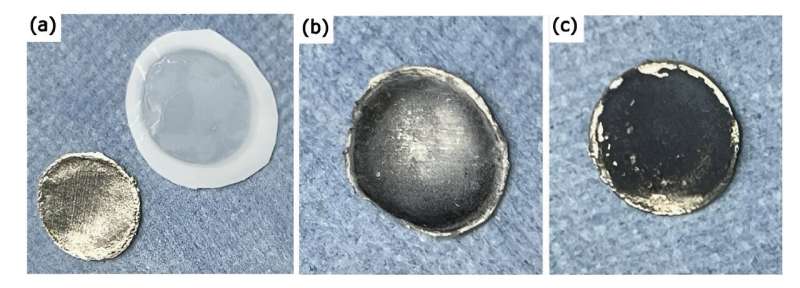This article has been reviewed according to Science X's editorial process and policies. Editors have highlighted the following attributes while ensuring the content's credibility:
fact-checked
peer-reviewed publication
trusted source
proofread
New study reports scalable and cost-effective method to assemble a safer and durable lithium metal battery

Lithium metal batteries (LMBs) can provide nearly 10 times higher energy density compared to the present Lithium-ion batteries (LIBs) and hence are identified as one of the potential future storage systems. However, LMBs pose certain safety concerns and cannot be used for fast-charging applications. Uncontrolled dendrite formation, leading to excessive heating and battery short circuit is one of the critical challenges of its advancement.
Researchers have previously attempted to address the safety concerns in LMBs, but with methods that were laborsome and money/time- intensive. Now T. N. Narayanan's lab at the Tata Institute of Fundamental Research, Hyderabad (TIFRH) reports a simple, scalable, cost-effective method to assemble a safer and durable lithium metal battery.
The research is published in the journal Small.
A porous separator membrane lies between the electrodes in a battery, keeping them apart, and is crucial to prevent a short circuit. When a battery is used for some time, tree-like structures or whiskers called dendrites begin to form on one of the electrodes. If these dendrites grow uncontrollably, they may in some sense become a physical bridge between the two electrodes causing a short circuit.
Preeti Yadav and Pallavi Thakur, graduate students and lead authors of the study, used a commonly available graphite derivative powder to modify the separator membrane used in a typical battery. This modification suppresses dendrite formation and improves the longevity of the battery to a large extent. The researchers propose that this method of separator modification holds immense potential to be scaled up for industrial usage.
However, at a very high current density of 10 mA cm-2, the battery seems to be deteriorating slowly. This could be because of the electroplating of lithium on the carbon (a component of the deposited graphite derivative layer). The researchers aim to investigate these challenges further and understand the role of interfaces in improving the performance of a battery from a fundamental standpoint.
More information: Preeti Yadav et al, High Rate, Dendrite Free Lithium Metal Batteries of Extended Cyclability via a Scalable Separator Modification Approach, Small (2023). DOI: 10.1002/smll.202308344















